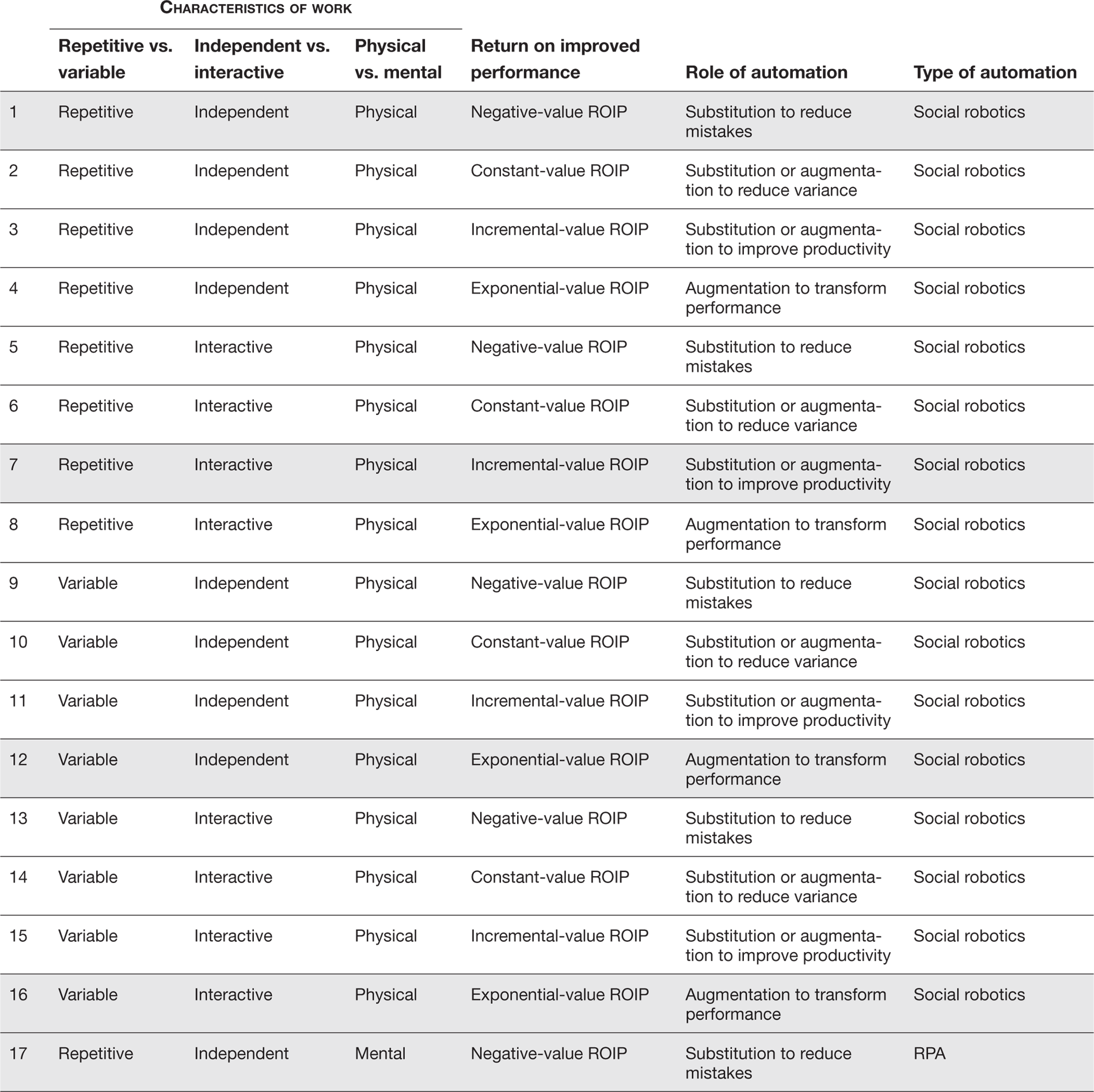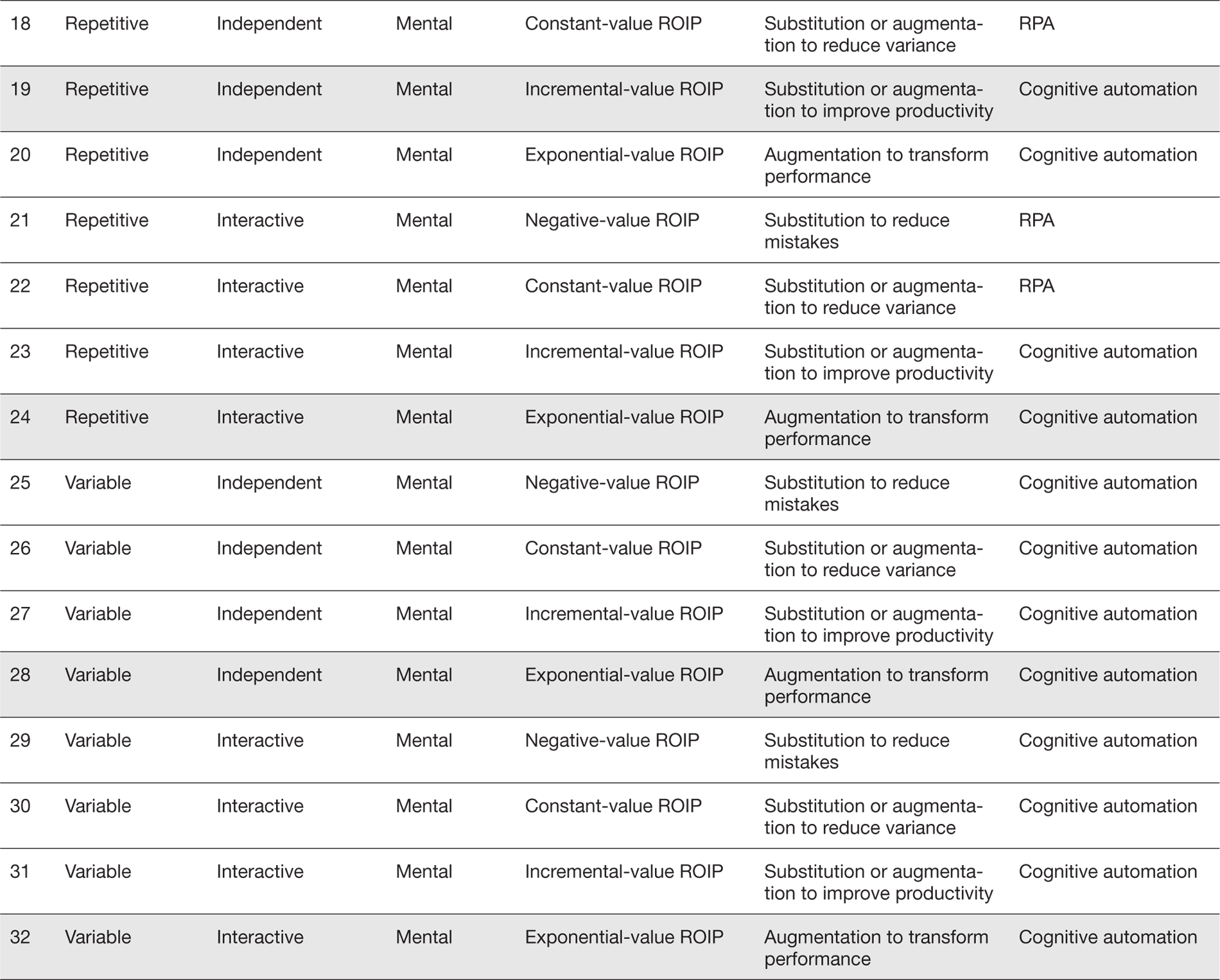Appendix
The grid in table A-1 shows the patterns in work-automation choices. The examples described in chapter 4 illustrate a subset of the rows contained in the grid. The examples reveal how the characteristics and value of work combine with the role and type of automation.
How can this grid guide you in thinking about how to optimally combine work and automation? For each work element, the characteristics of work and ROIP serve as inputs with implications for the role and type of automation. Let’s say you have deconstructed a job and isolated tasks that are repetitive, independent, and mental, with a negative value ROIP. In chapter 2 we explained that negative ROIP suggests the most pivotal value lies in reducing mistakes, given the steepness of the left side of the curve. What type of automation? For work that is mental, the two potential types of automation are either RPA or cognitive automation, as by definition, social robotics involves physical interaction between humans and robots. RPA is typically suited to substitute for human labor when work is repetitive and mental and most often done independently, because RPA can both lower the cost of work and eliminate mistakes.
In the grid, RPA will always apply to repetitive mental work and social robotics will always apply to physical work, while AI can be used for multiple different types of work. This grid will serve as a useful rubric in helping you understand the optimal combinations of work and automation.


